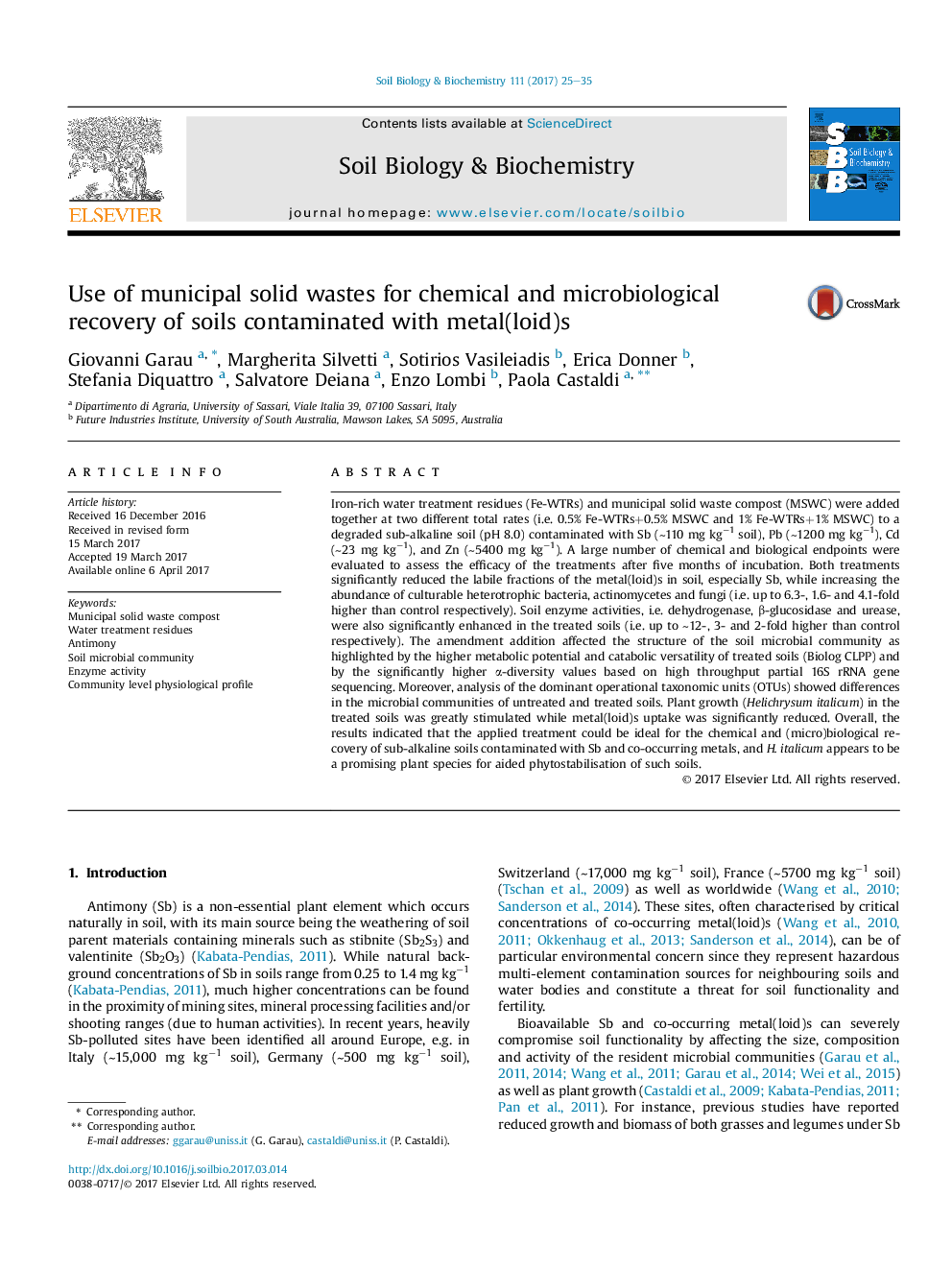| Article ID | Journal | Published Year | Pages | File Type |
|---|---|---|---|---|
| 5516282 | Soil Biology and Biochemistry | 2017 | 11 Pages |
â¢FeWTRs and MSWC were used as amendments to recover a metal(loid)s-contaminated soil.â¢FeWTRs and MSWC reduced the labile fractions of Sb, Pb, Cd and Zn in soil.â¢Treated soils showed higher abundance of culturable heterotrophic microorganisms.â¢Treated soils showed improved enzyme activity, metabolic potential and α-diversity.â¢Plant growth in the treated soils was greatly stimulated.
Iron-rich water treatment residues (Fe-WTRs) and municipal solid waste compost (MSWC) were added together at two different total rates (i.e. 0.5% Fe-WTRs+0.5% MSWC and 1% Fe-WTRs+1% MSWC) to a degraded sub-alkaline soil (pH 8.0) contaminated with Sb (â¼110 mg kgâ1 soil), Pb (â¼1200 mg kgâ1), Cd (â¼23 mg kgâ1), and Zn (â¼5400 mg kgâ1). A large number of chemical and biological endpoints were evaluated to assess the efficacy of the treatments after five months of incubation. Both treatments significantly reduced the labile fractions of the metal(loid)s in soil, especially Sb, while increasing the abundance of culturable heterotrophic bacteria, actinomycetes and fungi (i.e. up to 6.3-, 1.6- and 4.1-fold higher than control respectively). Soil enzyme activities, i.e. dehydrogenase, β-glucosidase and urease, were also significantly enhanced in the treated soils (i.e. up to â¼12-, 3- and 2-fold higher than control respectively). The amendment addition affected the structure of the soil microbial community as highlighted by the higher metabolic potential and catabolic versatility of treated soils (Biolog CLPP) and by the significantly higher α-diversity values based on high throughput partial 16S rRNA gene sequencing. Moreover, analysis of the dominant operational taxonomic units (OTUs) showed differences in the microbial communities of untreated and treated soils. Plant growth (Helichrysum italicum) in the treated soils was greatly stimulated while metal(loid)s uptake was significantly reduced. Overall, the results indicated that the applied treatment could be ideal for the chemical and (micro)biological recovery of sub-alkaline soils contaminated with Sb and co-occurring metals, and H. italicum appears to be a promising plant species for aided phytostabilisation of such soils.
